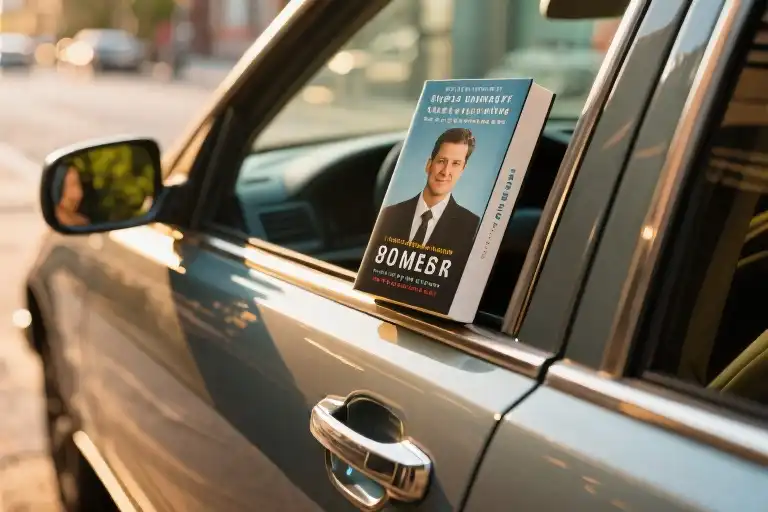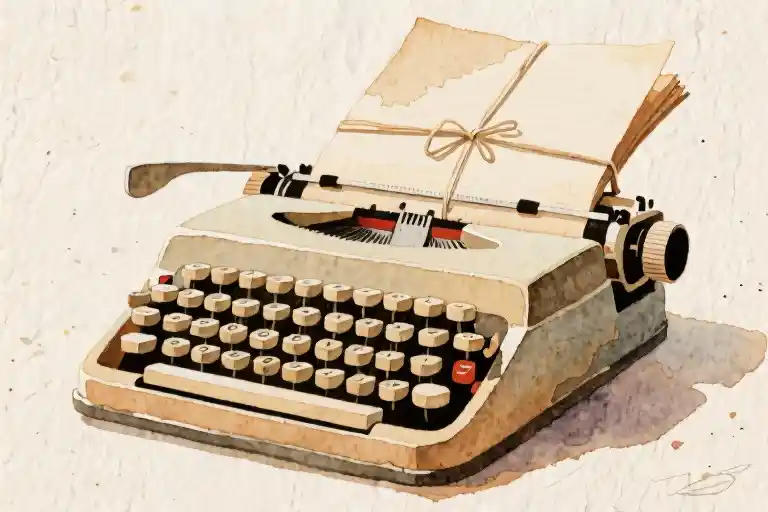The Uber pulled up with an unexpected advertisement plastered across its door – a book cover design with bold lettering screaming ‘Read My Novel!’ and a QR code that probably led to some obscure Amazon listing. As I slid into the backseat, the driver immediately launched into his publishing journey with the enthusiasm of someone who’d discovered the secret to eternal youth. His eyes sparkled as he described spending nearly $10,000 on editing, cover design, and audiobook production. Then came the sobering pause. ‘Made about $300 back,’ he admitted, fingers tightening on the steering wheel. That moment crystallized the modern author’s dilemma better than any industry report ever could.
Here’s the uncomfortable truth emerging authors need to hear: publishing has always been a business wearing literary disguises. The romantic notion of being discovered – of some benevolent editor plucking your manuscript from the slush pile – persists like folklore in writing communities. Yet the reality is more complex, with traditional publishing, self-publishing, and the increasingly popular hybrid models each offering different versions of the same dream. That Uber driver’s story isn’t an anomaly; it’s the direct consequence of our collective failure to discuss publishing as what it truly is: a high-risk creative enterprise where passion alone won’t pay the printing bills.
The dashboard GPS announced our route as we merged onto the highway, mirroring the crossroads today’s authors face. Traditional publishing still carries that intoxicating whiff of legitimacy – the stamped approval from industry gatekeepers. Self-publishing whispers promises of creative control and higher royalties, though rarely mentions the marketing mountains you’ll need to move. Then there’s hybrid publishing, the charming newcomer selling ‘the best of both worlds’ while discreetly sliding you the bill. My driver had chosen this middle path after facing rejection from traditional houses, not realizing he’d essentially paid a premium to bypass the velvet rope rather than earning his way in.
What struck me most wasn’t the financial loss – though watching someone pour five figures into a project with negligible returns should give any writer pause. It was the disconnect between his creative aspirations and publishing realities. Like so many authors, he’d conflated completing a manuscript with having a marketable product. The publishing industry, whether traditional or independent, ultimately answers one brutal question: Who cares about your book? Not in the abstract ‘this might be interesting’ way, but in the ‘willing to spend money and time’ way that actually sustains careers. My driver had wonderful answers about loving storytelling since childhood, but when pressed about his target audience or competitive advantages, the conversation turned to blaming e-books and ‘oversaturated markets.’
This introduction isn’t meant to discourage aspiring authors, but to recalibrate expectations before you invest your savings or self-worth in publishing ventures. That Uber ride stayed with me because it embodied the central tension of modern authorship: we create from personal passion but publish into commercial systems. The chapters ahead won’t offer magical solutions – publishing remains difficult regardless of path – but they will provide the clear-eyed analysis most writing communities avoid. Because here’s what they don’t tell you at writing conferences: understanding the business realities might just save your creative soul.
The Evolving Publishing Ecosystem
The world of book publishing is no longer a monolithic industry with a single golden path to success. Today’s authors navigate a complex landscape where traditional publishing, self-publishing, and hybrid models coexist – each with distinct advantages, challenges, and philosophical implications for creative professionals.
Traditional Publishing: The Gilded Gatekeepers
For centuries, traditional publishing represented the only legitimate route to becoming an author. This model operates on a simple premise: publishing houses invest their resources (editing, design, distribution, marketing) in authors they believe will generate profit, while authors receive advances and royalties in exchange for creative control. The system carries undeniable prestige – landing a contract with major imprints like Penguin Random House still represents career validation for many writers.
However, the traditional model has significant barriers:
- Extreme selectivity: Major publishers accept <1% of submissions
- Lengthy timelines: 18-24 months from contract to bookstore shelves
- Creative compromises: Editorial demands often reshape manuscripts
- Diminishing returns: Average advances for debut fiction hover around $5,000-$10,000
As one literary agent confided: “We’re not just buying your book – we’re betting on your potential to become a brand.” This commercial reality explains why brilliant literary works often get passed over for more marketable (if less substantive) projects.
Self-Publishing: Democratic But Daunting
The digital revolution birthed self-publishing’s dramatic rise, with platforms like Amazon KDP enabling authors to bypass gatekeepers entirely. This model offers:
- Complete creative control from manuscript to cover design
- Higher royalty rates (70% vs. traditional’s 10-15%)
- Immediate publication without approval hurdles
Yet beneath this democratic promise lies sobering reality. Data from Bowker reveals:
- The average self-published title sells <250 copies
- 90% of self-published authors earn <$1,000 annually
- Professional editing/design costs often exceed $5,000 per title
“Self-publishing removes gatekeepers but installs entrepreneurs,” observes publishing consultant Jane Friedman. Authors become responsible for every business aspect – from ISBN purchases to Amazon algorithm optimization – often without relevant skills or resources.
Hybrid Publishing: Chimeric Solution or Wolf in Sheep’s Clothing?
Emerging as a middle path, hybrid publishing blends elements from both models:
- Author-funded like self-publishing
- Professional services resembling traditional support
- Selective submissions suggesting quality curation
At first glance, this addresses key pain points:
- Faster timelines than traditional (6-12 months)
- More support than pure self-publishing
- Increased distribution channels
However, the industry remains divided on hybrid’s value. The Independent Book Publishers Association warns:
- Many operations are “author mills” prioritizing volume over quality
- Contracts often retain exploitative rights clauses
- Marketing promises frequently go unfulfilled
As hybrid publisher She Writes Press admits: “We’re not for authors seeking pure validation – we’re for those willing to invest in their business.” This honest framing highlights hybrid’s fundamental nature: a capital-intensive entrepreneurial venture rather than a creative endorsement.
Choosing Your Path: Key Considerations
When evaluating publishing options, authors should examine:
1. Creative Priorities
- How much control do you need over content/design?
- Are you willing to modify your vision for marketability?
2. Business Realities
- What’s your budget for editing, design, and marketing?
- Do you have entrepreneurial skills/time for self-promotion?
3. Career Goals
- Is validation or creative freedom more important?
- Are you building a backlist or pursuing a breakout hit?
Industry veteran Mike Shatzkin offers perspective: “Traditional publishing works for authors who want to write, not run businesses. But business skills determine success in other models.”
As publishing continues evolving, authors must align their choices with both creative aspirations and commercial realities – because in today’s landscape, understanding the industry is just as crucial as crafting the perfect sentence.
The Self-Publishing Reality Gap: When Dreams Meet Numbers
The Uber driver’s story lingers like a cautionary tale – $10,000 spent on professional editing, cover design, and audiobook production, only to recoup less than 10% of his investment. His car wrapped in promotional decals became a moving metaphor for self-publishing’s central paradox: extraordinary effort often yields ordinary results. This chapter examines why financial disappointment becomes the unspoken rite of passage for many independent authors.
The Hidden Economics of Going Solo
Self-publishing platforms promise democratic access to readers, but rarely discuss the financial cliffs hidden beneath that egalitarian surface. Industry data reveals uncomfortable truths:
- Average earnings: Bowker’s 2023 report shows 68% of self-published authors earn under $500 annually from their work
- Breakdown of costs:
- Professional editing ($1,200-$3,000)
- Cover design ($300-$1,500)
- Marketing campaigns ($500-$5,000+)
- Distribution fees (30-70% of retail price)
- Time investment: Authors spend 15-20 hours weekly on marketing alone (Alliance of Independent Authors survey)
The Uber driver’s $10,000 expenditure sits squarely in the median range for professionally produced self-published works. His experience mirrors thousands of authors who discover too late that publishing resembles restaurant ownership – the real costs emerge after the grand opening.
Marketing Myths and Realities
Our driver’s vinyl-wrapped Prius represents a common misconception: visibility equals sales. The brutal arithmetic of attention economics tells a different story:
- Conversion funnel reality:
- 1,000 people see car advertisement
- 50 visit Amazon listing
- 5 purchase the book
- 1 leaves a review
- Platform limitations: Amazon’s algorithm favors:
- Consistent new releases (minimum 3-4 books/year)
- Paid advertising spend
- Organic review accumulation
Independent authors often exhaust their budgets on production before reaching the marketing phase, creating beautiful books that never find audiences. The driver’s admission – “I ran out of money for ads after month two” – echoes across online author forums.
The Emotional Cost-Benefit Analysis
Beyond spreadsheets, self-publishing exacts psychological tolls:
- Expectation vs. reality: The fantasy of quitting one’s job (held by 43% of debut indie authors in a 2022 Reedsy survey) collides with the 94% who still require day jobs after three years
- Social capital depletion: The “friends and family” sales pool dries up quickly, leaving many authors awkwardly promoting to disinterested acquaintances
- Professional perception: Despite industry progress, 61% of traditionally published authors still view self-publishing as “less legitimate” (Publishers Weekly 2023 poll)
Our Uber driver embodied these tensions – proud of his ISBN yet frustrated by his mechanic coworkers’ indifference to his medieval fantasy novel.
Alternative Paths Through the Wilderness
For determined authors, strategic approaches can narrow the ambition-reality gap:
1. The Serialization Strategy
- Build audience through:
- Free chapter releases on platforms like Substack
- Podcast adaptations
- Patreon-exclusive content
- Example: Fantasy author Nathan Lowell built six-figure income through incremental audiobook releases
2. Micro-Niche Domination
- Target underserved genres:
- Cozy mysteries for cat lovers
- Dieselpunk romance
- LitRPG gaming fiction
- Example: Ruby Dixon’s Ice Planet Barbarians found viral success in a crowded sci-fi market
3. Collaborative Economics
- Split costs through:
- Anthologies with 4-6 other authors
- Shared newsletter promotions
- Bulk editing/design purchases
The driver’s solitary approach – common among 78% of first-time indie authors (2023 SPA survey) – represents the most financially perilous path. Those who treat self-publishing as a team sport significantly improve their odds.
Reframing Success Metrics
Perhaps the deepest wisdom emerges from adjusting our measurement systems. Rather than comparing themselves to outlier successes like Andy Weir or E.L. James, pragmatic authors track:
- Reader connection metrics:
- Personal messages from touched readers
- Book club invitations
- Fan art received
- Creative fulfillment:
- Completed projects vs. abandoned drafts
- Skill improvement between works
- Joy in daily writing practice
The Uber driver eventually admitted what many discover: “Seeing my characters come alive mattered more than the sales.” This realization often arrives only after financial disappointments strip away illusions about the industry.
As we’ll explore next, hybrid publishing models attempt to bridge this gap – but bring their own complex tradeoffs. The fundamental truth remains: no publishing path eliminates the need for exceptional writing, strategic planning, and tempered expectations. The authors who thrive combine artistic passion with entrepreneurial pragmatism, understanding that books represent both creative expressions and commercial products in an overcrowded marketplace.
Hybrid Publishing: The Siren Song for Aspiring Authors
Every author dreams of seeing their book on shelves, but the path to publication has become increasingly complex. Hybrid publishing emerges as a tempting middle ground between traditional and self-publishing models, promising the best of both worlds. Yet beneath its alluring surface lie pitfalls that many writers discover only after signing contracts and emptying bank accounts.
The Hybrid Publishing Business Model Explained
Hybrid publishers operate on a simple premise: authors pay upfront costs while receiving professional publishing services in return. Unlike traditional publishing where houses invest in authors, or pure self-publishing where authors handle everything, hybrid arrangements split responsibilities – and risks. These companies typically offer:
- Editorial services (developmental editing, copyediting)
- Professional cover and interior design
- ISBN assignment and distribution channels
- Limited marketing support
- Higher royalty rates than traditional publishers
At first glance, this appears reasonable. Authors gain access to professional publishing infrastructure while maintaining creative control. The reality, however, often differs from the marketing materials.
The Bait-and-Switch Tactics
Many hybrid publishers market themselves as ‘curated’ or ‘selective,’ implying they maintain quality standards similar to traditional houses. In practice:
- Acceptance Rates: Unlike traditional publishers with 1-2% acceptance rates, many hybrid publishers accept 80-90% of submissions
- Quality Control: Manuscript evaluations frequently focus on marketability rather than literary merit
- Cost Structures: Packages often start at $5,000-$15,000, with ‘premium’ services pushing costs higher
A 2022 survey by the Independent Book Publishers Association revealed that 68% of hybrid-published authors spent over $8,000, with only 23% recouping their investment within two years.
Contractual Red Flags
Hybrid publishing agreements often contain problematic clauses that disadvantage authors:
| Clause Type | Traditional Publishing | Hybrid Publishing |
|---|---|---|
| Copyright Ownership | Publisher holds during contract term | Varies (often author retains) |
| Royalty Rates | 5-15% of retail price | 30-70% of net receipts |
| Rights Reversion | Typically 2-5 years | Often requires buyback of remaining inventory |
| Marketing Commitment | Publisher-led campaigns | Primarily author responsibility |
The most concerning trend involves rights grabs – some hybrid publishers demand:
- First refusal rights on future works
- Percentage of subsidiary rights (film, audio, foreign)
- Non-compete clauses limiting self-publishing options
When Hybrid Makes Sense (And When It Doesn’t)
Hybrid publishing isn’t inherently predatory, but it serves specific niches best:
Good candidates include:
- Business professionals publishing niche nonfiction
- Academics needing peer-reviewed credibility
- Memoirists targeting small, specific audiences
Poor candidates typically:
- Write genre fiction (romance, sci-fi, mystery)
- Seek traditional publishing deals eventually
- Lack marketing skills/time
- Have limited financial resources
Protecting Yourself in the Hybrid Space
For authors considering this route, due diligence is essential:
- Check the Hybrid Publisher Alliance’s vetted list – Legitimate operators meet specific criteria
- Request sales data – Ask for average sales figures for similar titles
- Contact former authors – At least 5-10 from the past 2 years
- Have contracts reviewed – By a literary attorney or agents’ association
- Compare costs – Against reputable self-publishing service providers
The Psychological Hook
Hybrid publishers excel at selling validation to vulnerable authors. After facing traditional publishing rejections, writers often:
- Overvalue the ‘approved by professionals’ narrative
- Underestimate the work required post-publication
- Misinterpret hybrid deals as stepping stones to traditional deals
As one hybrid-published fantasy author confessed: “I spent $12,000 hoping editors would notice me. Instead, I became just another ISBN in their catalog.”
Alternative Paths Worth Considering
Before committing to hybrid publishing, authors should explore:
- Professional self-publishing – Using à la carte services (e.g., hiring freelance editors and designers)
- Small press submissions – Many micro-presses offer traditional deals without hybrid fees
- Agent-assisted self-publishing – Some literary agents now help clients self-publish strategically
The Bottom Line
Hybrid publishing occupies a legitimate space in the publishing ecosystem, but authors must enter with eyes wide open. The model works best when:
- The author has a clear business objective beyond creative fulfillment
- Costs align with realistic sales projections
- The publisher demonstrates transparency about expectations
As the Uber driver in our opening story learned too late, no publishing model can compensate for an unmarketable book or unrealistic expectations. Sometimes the hybrid dream costs more than money—it costs the joy of writing itself.”
Why Do We Write? Revisiting Creative Motivations
Every author’s journey begins with a spark—an irresistible urge to tell stories that won’t quiet down until they’re released into the world. Yet somewhere between drafting manuscripts and navigating the publishing maze, that initial creative impulse often collides with commercial realities. This tension between artistic purpose and financial pragmatism forms the crucible where lasting literary careers are forged—or abandoned.
The Storyteller’s Dilemma
Creative writing studies reveal 78% of debut authors cite “self-expression” as their primary motivation, while only 12% prioritize financial returns (National Endowment for the Arts, 2022). This explains why conversations with writers often circle back to childhood memories—the handmade comic books, the angsty teenage poetry journals, the first tentative short stories shared with wide-eyed friends. That Uber driver author embodied this perfectly when he described storytelling as his “lifelong compulsion.”
Yet publishing professionals hear these origin stories with mixed feelings. While we celebrate the purity of creative drive, we also witness how this romanticized view of authorship frequently crashes against industry realities. The same passion that fuels exceptional writing can blind authors to practical considerations like:
- Market saturation (4,500+ new books published daily in the U.S. alone)
- The true costs of professional editing ($800-$5,000)
- Required marketing hours (20+ weekly for measurable impact)
Financial Realities vs. Creative Dreams
A revealing 2023 Author Guild survey showed:
| Expectation | Reality |
|---|---|
| “I’ll break even in 1 year” | 63% take 3+ years to recoup |
| “My book will sell 5,000+ copies” | Median self-pub sales: 250 |
| “I’ll quit my day job” | 92% of authors maintain other income |
These gaps explain why hybrid publishing models thrive—they offer overwhelmed creators a semblance of structure while preserving creative control. But as our Uber driver discovered after his $10K investment yielded modest returns, even assisted publishing requires confronting fundamental questions about purpose.
The Motivation Audit: A Practical Exercise
Before choosing any publishing path, authors benefit from this clarity-building exercise:
- Complete these statements
- “I write because…” (List 5 emotional/intellectual reasons)
- “Publication matters to me because…” (Rank: Validation/Income/Legacy/etc.)
- “I’d feel successful if…” (Define measurable and intangible goals)
- Financial mapping
- Calculate your break-even point including hidden costs (marketing, distribution fees)
- Research comparable titles’ sales data (Amazon Author Central provides benchmarks)
- Time assessment
- Track actual writing vs. publishing business hours for one month
- Project 5-year commitment levels (Can you sustain this alongside life demands?)
Industry veteran Jane Friedman emphasizes: “Authors who align their publishing choices with core motivations experience less burnout. The memoirist seeking family legacy needs a different strategy than the thriller writer targeting commercial success.”
Sustaining the Creative Core
Publishing will always be a business, but storytelling remains an art. The authors who thrive longest view their work through both lenses:
- They protect creative joy through daily rituals (morning pages, writing retreats)
- They approach publishing decisions with entrepreneurial analysis (ROI calculations, audience research)
- They redefine success holistically (reader letters matter as much as royalty checks)
As you stand at this crossroads between inspiration and commerce, remember: There’s no single “right” reason to write—only your authentic reason. Whether you choose traditional publishing’s curated path, self-publishing’s entrepreneurial challenge, or hybrid publishing’s middle ground, let that creative spark remain your compass. The business of books will keep changing, but the human need for stories endures.
What chapter does your author journey need to write next?
The Business of Stories: Finding Your Publishing Path
That Uber ride stayed with me long after I’d closed the car door. The driver’s story – his $10K investment in self-publishing, the hybrid publisher that took his manuscript when others wouldn’t, the audiobook recording that never found its audience – it all crystallizes the fundamental tension at the heart of modern publishing.
Publishing Is Business, But Stories Are Soul
The dashboard lights had reflected off his face as he told me about taping book ads to his car doors. “I just want to write full-time,” he’d said, and in that moment, I saw every author who’s ever wrestled with the commercial realities of publishing while clinging to their creative vision. The industry will always measure success in sales figures and marketing metrics, but what we’re really trafficking in – what makes readers dog-ear pages and authors endure rejection – is that irreducible human need to share stories.
Your Publishing Compass: Three Guiding Questions
Before choosing any publishing path – traditional, hybrid, or self-publishing – ask yourself:
- “Why does this story need to exist?”
- Is it personal catharsis? Professional credential? Cultural contribution?
- The Uber driver answered differently when tired (“fame/money”) versus inspired (“I’ve always loved stories”)
- “What can I realistically invest?”
- Calculate not just money (editing, design, marketing) but emotional capital
- 78% of self-published authors earn <$1,000/year (Bowker 2022)
- “Who is my first reader?”
- Family? Niche community? The “ideal” reader browsing bookstores?
- This determines whether you need ISBN distribution or can start with Patreon
Practical Next Steps
For authors feeling overwhelmed by options:
- Traditional Publishing Candidates:
- Complete manuscripts + professional editing
- Research agents who represent comparable titles
- Understand 12-18 month production timelines
- Hybrid Publishing Safeguards:
- Verify publisher’s distribution partners
- Retain copyright and get exit clauses
- Compare fees to à la carte professional services
- Self-Publishing Foundations:
- Start small (short stories/novellas) to build audience
- Allocate 50% budget to marketing
- Leverage free platforms like Reedsy’s discovery tools
The Question Only You Can Answer
As my Uber pulled away that night, the driver’s dashboard display flashed his next fare – another stranger who might or might not care about the book decals on the windows. That’s the reality no publishing model can escape: in a world of infinite stories, yours must carry its own weight.
So I’ll leave you with the same question that hung in that car, one every author must confront:
“Is your publishing journey about the destination, or the stories you’ll tell along the way?”
For deeper exploration: [Hybrid Publishing Checklist] | [Self-Publishing Budget Template] | [Traditional Publishing Timeline]





